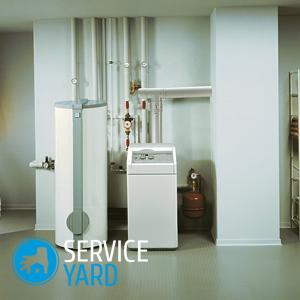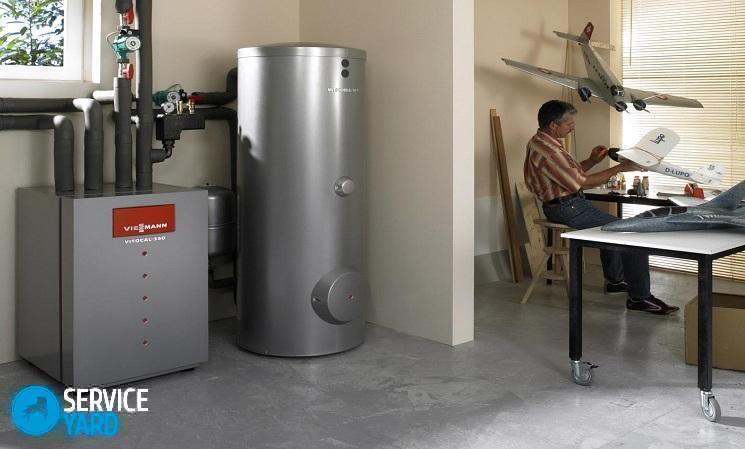How to choose a boiler for heating a private house by power?

Despite the large number of options for heating private homes, many people prefer a proven option - gas or solid fuel boilers. Such a unit is reliable and durable, does not require complicated maintenance. In addition, the variety of models makes it possible to accurately select the device for a particular room. Power is the main characteristic of heating appliances. The comfort of the home microclimate, the economy, the safety of the boiler, and its working life depend on how correctly the device is selected. In this article, we will consider how to choose a boiler for heating a private house by capacity, what factors should be taken into account.
to contents ↑Why is accurate power calculation necessary?
The choice of the boiler is based on accurate calculations, allowing you to have an idea about the real heat loss of a private house:
- The purchase of an instrument with an excess resource leads to unjustified fuel consumption.
- A low-power unit will not be able to qualitatively heat the living room. In addition, working at the limit of possibilities, he will quickly fail.
to contents ↑Important! How to choose a boiler according to the area of the house in the simplest way? The simplest calculation of the boiler is 1 kW of power per 10 “squares" of housing, plus a margin of 15-20%. For example, to heat a house of 100 m², you need a boiler for 12,000 watts. This calculation is very large and approximate. It can be used only for buildings with good thermal insulation, with low ceilings and for regions with a mild climate. Naturally, not all private houses meet these requirements.
The initial data for the calculation
For a house made according to a standard project, with ceilings 3.0 m high, it is not difficult to calculate the required power of the heating device. Consider how to select a gas boiler for a private house by area. The calculation is based on 2 parameters:
- The total area of the house.
- Specific power of the boiler (UMK). This indicator varies for different climatic zones.
The value of the CMD is:
- For the southern regions - 0.7-0.9 kW.
- For the middle band - 1.0-1.2 kW.
- For the northern regions - 1.5-2.0 kW.
The formula for the calculation will look like this: M = S x UMK / 10, where
- M - boiler power, kW.
- S is the area of the house,
- UMK - specific power of the boiler.
Important! For instance:
- The value of the desired indicator for a house with a square of 100 m², located in the southern region, is: M = 100 x 0.9 / 10 = 9 kW.
- For the same building in the northern regions, a similar indicator for a heating boiler will be: M = 100 x 2/10 = 20 kW.
As you can see, the difference is more than double. If you want to install a dual-circuit unit, increase the figure obtained by calculation by 20%.
to contents ↑Heat loss accounting
Even the above calculation is not accurate. For the right choice of heating device, you need to have information about real heat loss. One house is well insulated, and in the other there are old frames made of shriveled wood and a brick one wall thick. Heat losses in these buildings, of course, will be different.
Important! According to experts:
- The largest heat leakage (about 35%) is due to insufficiently insulated walls.
- About a quarter of heat loss occurs on an un-insulated or poorly insulated roof.
- Insufficiently thought out floor insulation is responsible for about 15% of heat leaks.
- Only 10-15% of heat leaks are due to ventilation and open windows.
As you can see, the simplest formula for accurate calculation is clearly not enough. In each case, the power calculation will be individual.
to contents ↑Dispersion factor
This coefficient is one of the most important indicators of heat transfer between the room and the environment. In the calculations, the following values of this coefficient are taken as a basis:
- 3.0-4.0 - for buildings in which there is no thermal insulation. Most often these are temporary buildings made of wood and metal.
- 2.9-2.0 - for buildings with minimal thermal insulation. This refers to thin-walled houses with insulated walls, a simple roof structure and wooden frames.
- 1.9-1.0. This value of the dispersion coefficient corresponds to the average level of insulation (brick house with insulated or double walls, with insulated roof and attic, with double glazing).
- 0.6-0.9. This coefficient is used for houses built using modern technologies and materials. They are characterized by a well-designed ventilation system, floor and roof are insulated, windows with good thermal insulation are mounted.
Important! The most accurate formula for calculating possible heat loss: Qt = V * Pt * k / 860, where
- Qt - possible heat loss;
- V is the volume of the room.
- Ht is the difference between the desired room temperature and the minimum external air temperature characteristic of these latitudes;
- k is the dispersion coefficient.
We calculate the heat loss for a house of 100 "squares" with ceilings 3 m high, with an average level of thermal insulation:
- Desired room temperature +20 degrees.
- The minimum air temperature for this region is the same 20 degrees, but with a minus sign.
- Qt = 300 x 40 x 1.9 / 860 = 26.5 kW.
- Taking into account the stock, we multiply the resulting figure by 20%: 26.5 x 1.2 = 31.8 kW.
- Rounding the resulting figure to the nearest integer, we get a power of 32 kW.
This calculation allows you to choose a boiler unit with sufficiently high accuracy, taking into account the climate in the region and the characteristics of the structure.
to contents ↑Special calculation programs
You can use various programs and online calculators to calculate. The advantage of such programs is that they take into account a large number of very different factors:
- Desired room temperature.
- The average temperature in the cold season.
- The need for hot water.
- The number of floors.
- The presence or absence of a forced ventilation system.
- Ceiling height.
- The thickness of the walls, the characteristics of the floors.
- The number of windows, their sizes and characteristics (number of cameras, glass thickness).
By filling out the form fields, you get the exact value of the original power, and then select the device according to the characteristics.
to contents ↑Stock footage
Now you know several ways how to calculate the power of a solid fuel boiler according to the area of the house. If the calculations seem too complicated for you or you are afraid to make a mistake, consult a specialist.
- How to choose a vacuum cleaner taking into account the characteristics of the house and coatings?
- What to look for when choosing a water delivery
- How to quickly create comfort at home - tips for housewives
- How to choose the perfect TV - useful tips
- What to look for when choosing blinds
- What should be running shoes?
- What useful things can you buy in a hardware store
- Iphone 11 pro max review
- Than iPhone is better than Android smartphones




